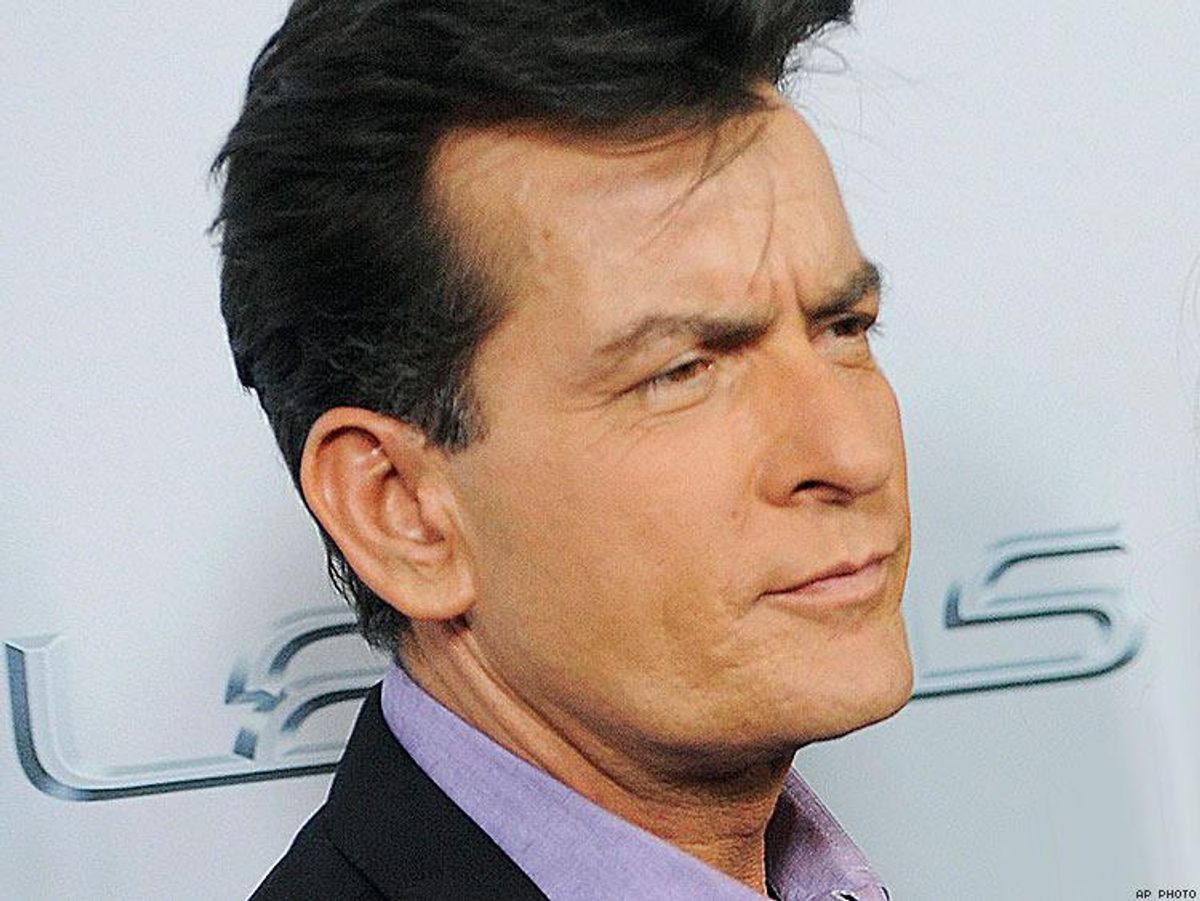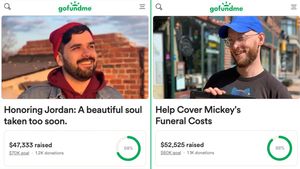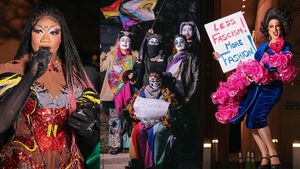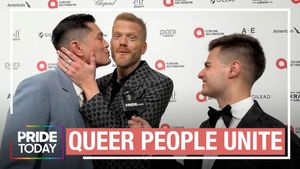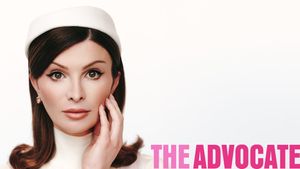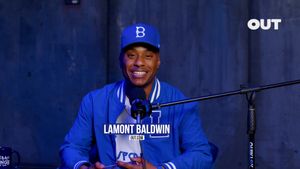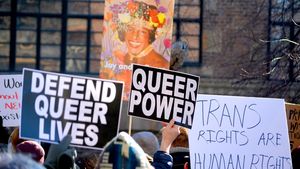When Charlie Sheen revealed his HIV-positive status on NBC’s The Today Show with Matt Lauer, the American public revisited the discussion about what it means to be living with HIV in 2015. Although the U.S. has remained steady at about 50,000 new infections each year, the topic had been largely absent from mainstream news for quite some time. Now, with Sheen stepping forward as the most known famous person to be living with HIV, the national public is once again engaged in HIV prevention and getting tested for HIV.
According to STDcheck.com, a leading provider of private STD tests, there was a dramatic increase in sales of their at-home testing kits on the day Sheen revealed his status.
"Thus far, our record-breaking days have always been on a Monday following popular weekends or holidays, and none of them have ever been as large as the surge we saw on November 17," Fiyyaz Pirani, founder and CEO of STDcheck.com, said. "We've ran the numbers over and over and we can't find any other rhyme or reason behind why on a Tuesday our testing sales would rise the way they did other than it being the same day Charlie Sheen made his announcement to the media. It can't just be a coincidence."
STDcheck reported a near 70 percent increase in their sales volume on November 17 compared to the company’s average Tuesday sales. Pirani has also speculated on another possible connection with Sheen and the uptick in testing kit sales.
"A huge number of our test sales on Tuesday were in Los Angeles and its surrounding area," Pirani said. "Of course, whether our customers there were individuals who slept with Sheen or were just motivated to get tested in lieu of learning his status, we'll never know. Regardless of why, Charlie Sheen clearly brought awareness to HIV and HIV testing."
HIV testing with STDcheck.com requires a very small blood sample, and the lab results are available in 24 to 48 hours. In addition to their HIV antibody test, the company offers an HIV RNA test that can detect HIV earlier than conventional testing; it can be given 9-11 days after exposure. Many test buyers last Tuesday purchased the 10-Test Panel, which evaluates for 10 sexually transmitted infections and diseases, including HIV types 1 and 2.
For other agencies that offer HIV testing, the effect Sheen has had on testing is too soon to call. But organizations like AIDS Arms, an HIV/AIDS non-profit organization in Dallas, have noticed one thing for certain.
“Since [Sheen] revealed that he is HIV-positive, there has been an increase in the conversation around HIV testing and knowing your status,” said Ashley Innes, director of prevention programs and services at AIDS Arms, Inc. “Whenever something is trending in the media it gets people talking, and lately many people I have spoken with have said that Charlie Sheen has got them thinking about HIV again. It has allowed for some enriching conversations about HIV testing and the disclosing of HIV status. Whether or not they will take it a step further and actually get tested remains to be seen.”
But according to Innes, not everyone sees the Sheen Effect as a good thing.
“While many people praised Charlie Sheen for revealing his status, there are some in the HIV positive community that feel his coming out perpetuates stigma." said Innes. "A significant portion of society already views HIV positive people negatively. Some of our clients have expressed that given Sheen's history of drug use and multiple sex partners, he is reinforcing stereotypes of what “type” of person becomes HIV positive.”
Regardless of how Sheen’s personal life has influenced the public’s view of people living with HIV, the former Two and a Half Men star has brought national attention back to HIV in a big way. In addition to raising awareness on testing, Sheen and his doctor took the opportunity to discuss possibly the biggest advancement in HIV prevention that is largely ignored by mainstream media. Two men highlighted the importance of achieving and maintaining an undetectable viral load through proper medical treatment. Known as TasP, or treatment as prevention, this form of HIV prevention is a vital yet often overlooked step in reducing HIV infection
As a result, HIV/AIDS organizations have also reported an uptick in interest around TasP because of Sheen. Andrew Hattori is the director of communications and marketing at the San Francisco AIDS Foundation. He has also noticed an increase in inquiries around numerous HIV-related topics since Nov. 17, both through the organization and in his personal and professional relationships.
“We observed a big spike in web traffic, especially in the days surrounding Mr. Sheen's public disclosure, indicating that more folks were looking for resources about HIV treatment, transmission and testing,” said Hattori. “Articles on our blog, BETA, covering some of the studies that support Treatment as Prevention experienced more visitors too. Anecdotally, I've had a lot more conversations--both with friends who don't work in the HIV field and with members of the media covering the story--about viral suppression, what it means to be undetectable, and what it means not to judge someone based on their HIV status.”
Sheen’s admittance to having condomless sex with an undetectable viral load spawned a series of televised discussions about the state of HIV prevention and the validity of being “undetectable.” Men’s Health Magazine, a publication that has largely avoided HIV-related topics, published a story titled, “What is Undetectable HIV?” In the article, the author discussed how an undetectable viral load reduces the risk of transmission. To put “undetectable” into context, he wrote about Sheen’s ex-girlfriend, Bree Olsen, who is HIV-negative despite her claim that she was never told by Sheen about his diagnosis and only wore lambskin condoms (which do not protect against HIV).
The article states, “How could this woman have unprotected or badly protected sex with Charlie Sheen, a man carrying the HIV virus, for an entire year, maybe as often as once a day, and not have contracted the virus? Is she just the luckiest person in the universe? She somehow had 365 sexual encounters with a man carrying HIV and dodged 365 bullets?”
The article was widely criticized by several HIV activists for it’s criminal jargon and judgmental tone, and it was one of many articles on the topic that was printed by mainstream. Not once did the author mention Olson’s responsibility to inquire about his HIV status or take precaution to protect her own sexual health. Still, the article highlights Sheen’s effect on getting conventional media to cover HIV and gave sexual health advocates the opportunity to address prevention to a larger audience.
When Sheen firmly declared that he had not spread HIV to any of his sexual partners to millions of viewers, condom or not, it was a watershed moment for HIV prevention. According to the CDC, one in eight people (12.8 percent) living with HIV are unaware of their infection. This group, however, accounts for an estimated 30.2 percent of new HIV infections each year. In addition, 61.3 percent of new infections reportedly came from people who were aware of their status, but were not on treatment. With 91 percent of new infections coming from people who are either unaware of their status or not on treatment, an increase of testing as well as an education on the importance of treatment is paramount to HIV prevention.
The data on HIV transmission and the science of prevention is nothing new, but Sheen’s ability to get people to pay attention is, and the people who work in HIV prevention are ready and able to fill in the gaps.
